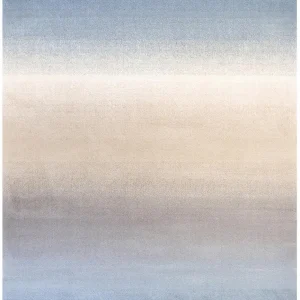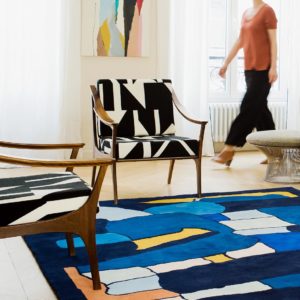Poésie
by Joyce Wang
MATERIALSLaine, soie, lurex et mohair
TECHNIQUE Tufté-Main
SIZE 270 x 360 cm
PRICE ON REQUEST. CONTACT US.描述
wool
Wool is an animal fibre, most often derived from sheep fleece. Wool was already being spun as early as 5,000 BC. In Roman times, wool, leather and linen were the main materials used to make clothes. With the progressive development of mechanical processes and the evolution of breeding techniques, wool became the economic lung of several countries in the Xth century, and again in the XIIth. Renowned for its thermal and sound insulation properties, wool also offers the advantage of absorbing moisture. It is a noble and timeless material, used from time immemorial for its strength and durability. PINTON uses local wool with shorter carded fibres, which make it fluffier and give it more volume, or a specific type of wool from New-Zealand with long combed fibres that are more resistant to heavy traffic. Both types of wool are spun (carded or combed) and dyed in the spinning plant located in Felletin. Whether they are made in 100% pure virgin wool or blended with other materials like linen, silk, bamboo, leather or many others, PINTON wool rugs and carpets bring comfort and quality.
silk
Silk is a natural animal fibre derived from the cocoon spun by the caterpillar of the bombyx mori (worm of the mulberry tree), unsurprisingly called the “silkworm”. Invented in China in the IIIrd millennium before Christ, silk wasn’t produced in Europe, mainly in Italy, before the end of the Middle Ages. And it’s only under the reign of Henri IV that silk production developed in France with the planting of 4 million mulberry trees in the Ardèche, Dauphiné and Cévennes areas. Silk threads are very strong and quality weaving makes silk very resistant. It gives a particular shine to the woven pieces and combines easily with other materials such as wool or bamboo. In its Couture collection PINTON offers 100% silk rugs, incredibly soft. In tapestries silk is most often used in complement of one or more other materials like wool or even cotton.
lurex
Metallic, shiny or glittering effects have always fascinated, symbolically associated with light, sun and sophistication. The invention of Lurex dates back to the XXth century, to 1946 to be precise. A polyester textile thread coated in a layer of metal to produce a shiny or shimmering look, Lurex is a light and flexible thread that comes in a large palette of colours. “Threads made for designers” is one of the main slogans of the company that registered the Lurex trademark. Indeed, since its invention this fibre has been inspiring both fashion and decorative art designers to create extravagant, subtle and elegant pieces. Combined with other materials in the production of PINTON rugs, Lurex does not diminish their softness. It gives them a touch of sophistication and chic, with understated patterns and delicate and infinite light reflections.
hand tufted
The hand tufting technique is a process combining centuries-old skills and modern weaving tools. The canvas is perfectly stretched over an upright loom and the craftsperson transfers by hand the future design of the rug with the utmost precision. Threads are inserted manually, one by one, working with a gun on the back of the canvas, following the colours, the drawing and the different tuft heights. PINTON was one of the first manufactories to use the gun tufting technique to produce some of its rugs and carpets and is the only French workshop offering very high quality tufted rugs. With this technique, production times are reduced compared to the knotted stitch weave or point noué. Finally, hand tufting offers a large range of possible depths. Carving is the technique that consists in sculpting the wool and creating textures within the woven rug. Since the early 1990s, PINTON has been specialising in the production of hand tufted rugs for which it also collaborates with famous designers and artists.
Joyce Wang
Joyce Wang is the founder and principal of Joyce Wang Studio. Joyce holds degrees in architecture and materials science from MIT and received her master’s degree from RCA. She credits her design background with sparking her lifelong fascination with materials and how the built environment affects the human experience. Joyce’s passion for culture is broad and deep; her inspiration extends to film, art, literature and travel, as well as architecture, craft and design.
Joyce Wang Studio is an interior design studio based in Hong Kong and London. Their team is a diverse group of cultures and creative skills, with a global mindset and reach. They design hospitality, wellness and homes, infusing them with flair and soul. They bring their combined expertise and divergent experiences to everything they do.













